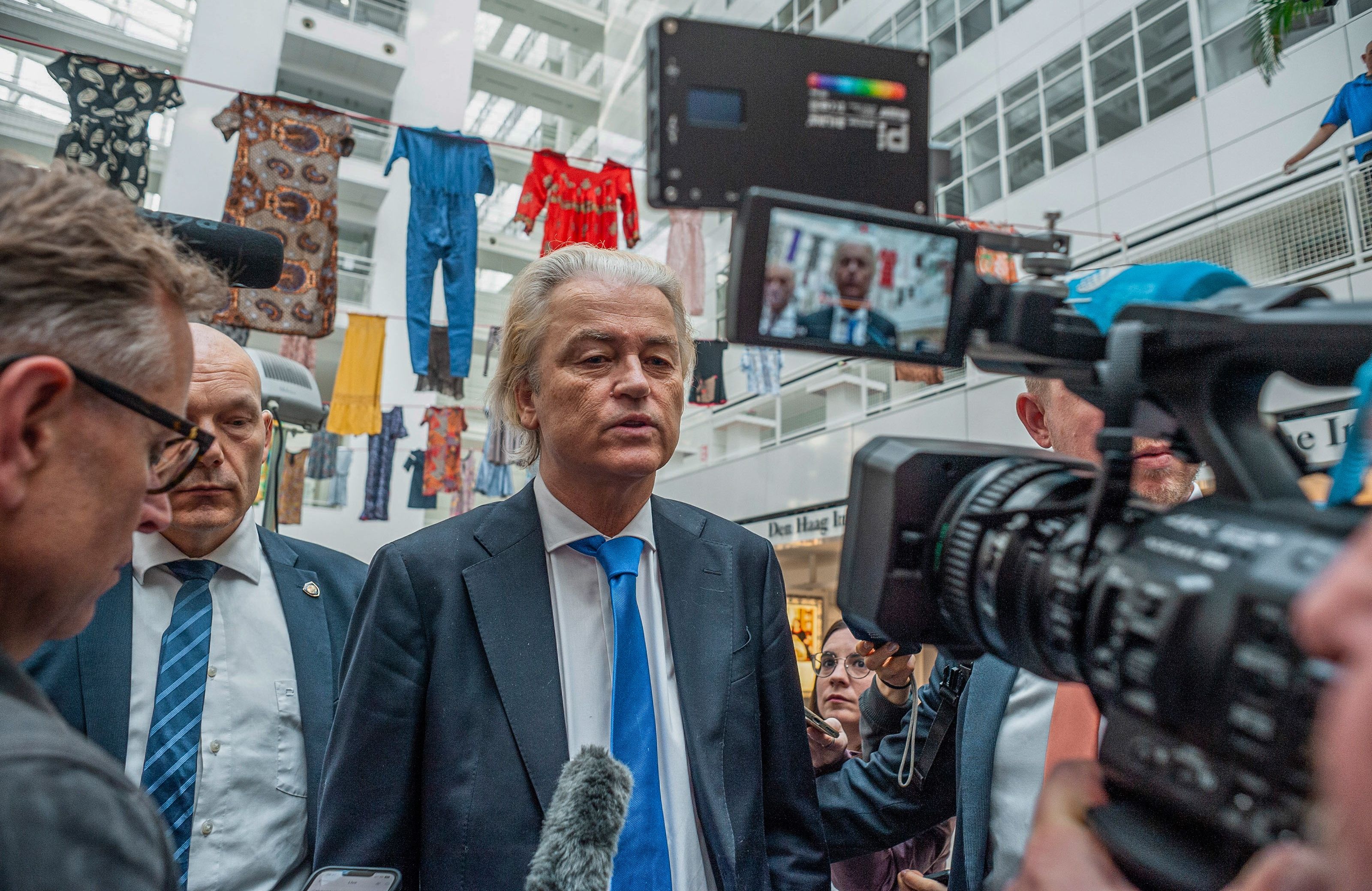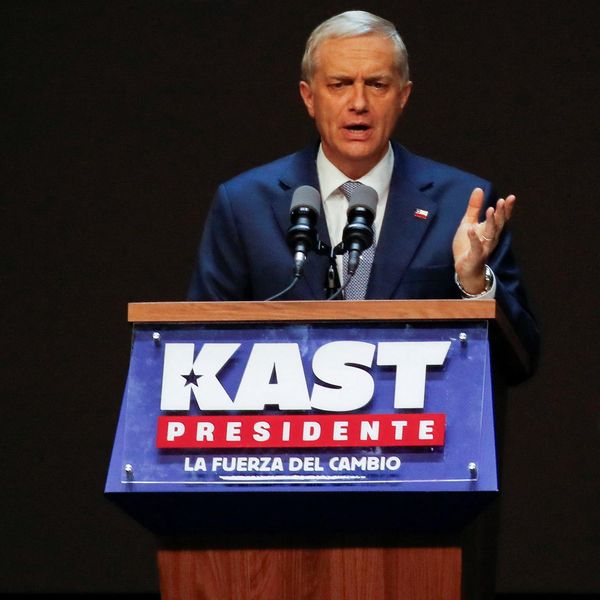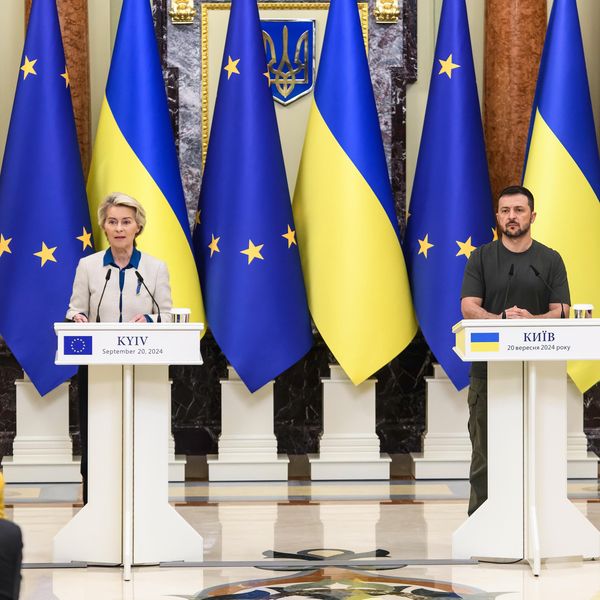With the European Parliament elections already in full swing in some of the European Union’s 27 member states, the consensus among EU watchers is that the populist right is poised to make sweeping gains in the pan-European legislature. Some alarmed mainstream commenters warn of a “Trumpian moment” in Europe.
It is true that parties broadly fitting in the populist right/national-conservative camp have been going from strength to strength in the EU. Today, they are either leading, are part of ruling coalitions, or offer crucial parliamentary backing in Italy, Sweden, Finland, Hungary, Croatia, and the Czech Republic, with the Netherlands soon to join the club following the electoral victory of Geert Wilders’s party.
If the populist right wins in Austria later this year, as the polls predict, and manages to form a government, then roughly one third of EU countries will be governed by right-wing populists.
For a full picture, in France, the National Rally party is polling around 30% for the European Parliament, far ahead of the liberal President Emmanuel Macron’s party, which is stuck at just 15%. And in Germany, the Alternative for Germany (AfD) is polling second to the center-right Christian-Democratic Union, ahead of all three ruling coalition parties — center-left social-democrats, Greens, and center-right liberals. In Poland, the Law and Order party, though no longer in government, is still a potent force. Since the European elections are, in effect, a sum of 27 national elections, it is entirely expectable that they will mirror these trends and see a further rise of the populist right.
Yet hyperbolic comparisons with the Trumpian phenomenon obscure far more than they enlighten. Two reasons stand out.
First, even the most optimistic (or alarming, according to one’s perspective) projections do not predict that any of the existing populist right groups in the European Parliament will earn a plurality of the seats in the new assembly. There are currently two such groups: European Conservatives and Reformists (ECR) and Identity and Democracy (ID). The polls predict that the more successful of them – ECR – could garner around 86 seats in a 720-member strong assembly (that is an increase from the current 66 seats).
ID is expected to win 67 seats (up from the current 49), and that excludes the German AfD, which could bring another 20 but was recently expelled from the ID over its lead member’s pro-Nazi comments. Still, both ECR and ID are very far from challenging the center-right European People’s Party (EPP) which is widely expected to win the elections with 172 MEPs, as well as center-left Socialists&Democrats (S&D), which is slated to get around 137 seats.
Second, the comparisons with Trump do not stand because there is no European equivalent of the Republican Party, and the right populist parties come in many shades and forms. The closest thing the EU has to the Republican party on the pan-European level is the EPP, itself a big tent that uneasily holds together centrist German and Benelux Christian-democrats, French Gaullists, Spanish post-Francoists, Nordic market liberals, and eastern European and Balkan ethnic nationalists. Since a Trump-style takeover of the EPP is impossible, for the populist right to fundamentally reshape European politics, it needs to establish a firm alliance with the EPP while forging its own internal cohesion.
That is a tall order. While all parties on the populist right, and increasingly many within the EPP, share restrictive stances on immigration (particularly from Muslim countries), climate action skepticism, and social conservatism of varying degrees, there is a crucial divide on the war in Ukraine. All the EPP parties are solidly pro-Ukraine. So are the leading forces in the ECR — Italian Prime-Minister Giorgia Meloni and the Polish Law and Order.
ID, by contrast, offers a more mixed picture: While the Italian Lega, Meloni’s coalition partner, generally toes the line on Ukraine, other heavy hitters, such as the French Marine Le Pen, and, before its expulsion, the German AfD, have been seen as far more reluctant to back Kyiv. Add to that one of Europe’s chief Ukraine skeptics, the Hungarian Prime Minister Victor Orban and his Fidesz party, currently without an affiliation in the European Parliament.
Leaders like Orban and Le Pen consistently call for a consolidation of the populist right into a single powerful bloc and court the ECR’s Meloni and the Poles to that end, but Ukraine remains a powerful deal-breaker. To find a way around it, however, it is the Ukraine skeptics who will more likely have to come around to adopt the mainstream EU line.
The Dutch Wilders, whose party sits with Le Pen’s ID in the European Parliament, used to be a staunch opponent of military aid to Ukraine, but as soon as he got a shot to form a government in the Netherlands, he shed his previous misgivings and pledged both support for Ukraine and increased defense spending to reach NATO’s 2% of GDP target.
Le Pen, in what one observer called the “process of Melonisation,” is similarly working to overcome her pro-Kremlin image and now offers full-throated support for Ukraine. Orban, of course, remains something of an outlier, but despite punching above his weight, he represents a relatively small Central European country and is dependent on EU cash handouts.
Herein lies another key difference with the “Trumpian moment”: Whereas in the U.S. the rise of the populist right has led to an emergence of a strong pro-foreign policy restraint camp within the Republican party, the European populist right is more likely to follow the opposite path by accepting the mainstream orthodoxies on foreign policy as a ticket to acceptance and power.
That may yet prove to be an Achilles heel for the populist right. While Europe has shown consistent solidarity with Ukraine and resilience in the sanctions war with Russia, there are signs of growing war fatigue. This hasn’t translated into demands to abandon Ukraine and appease Russia, but rather an expectation of some sort of a negotiated settlement to the war. According to the European Council on Foreign Relations’ EU-wide poll, 41% of Europeans hold the view that the EU should push Ukraine towards negotiating a peace deal with Russia, while 31% say the EU should support Ukraine in taking back the territories occupied by Russia.
By failing to articulate the preferences of that 41%, the populist right is leaving the field wide open for competitors from its own camp, as well as forces on the far left. The latter, according to the polls, may not reach even 40 MEPs and won’t win any votes in the European Parliament on an anti-war platform, but they could use their presence in the assembly strategically to channel the voice of those Europeans who do not feel represented by the current mainstream on questions of war and peace.
- Rightward, populist drift in EU elections signals big Ukraine shift ›
- Germany gets a new antiwar party, this time on the left ›
- How much did the right really gain in Europe? | Responsible Statecraft ›
- Austrian election could complicate EU Ukraine war policy | Responsible Statecraft ›
















